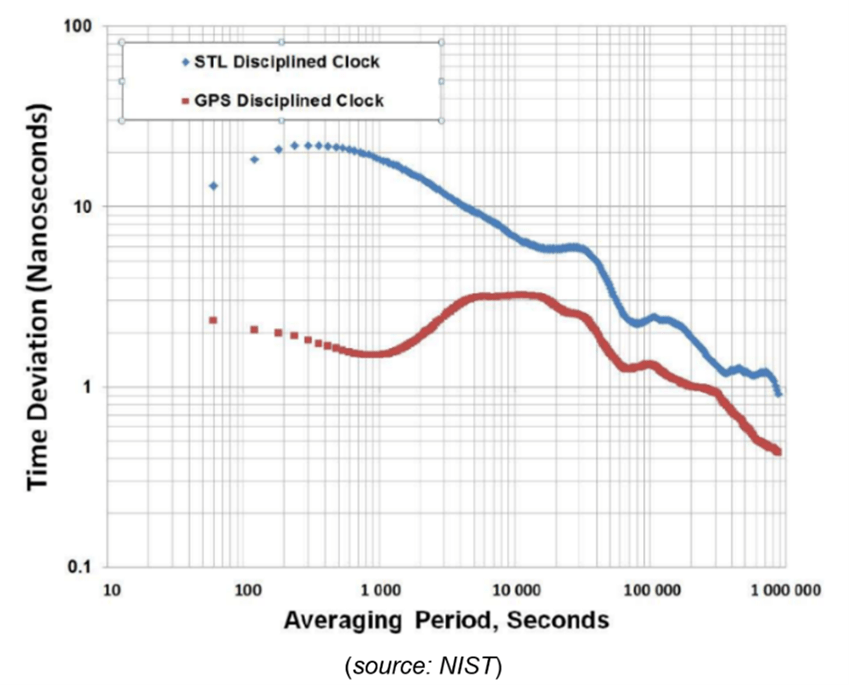A study by the U.S. National Institute of Standards and Technology (NIST), the U.S. Government agency responsible for maintaining national time scale, shows that Satelles’ Satellite Time and Location (STL) provides a signal that is independent of GNSS with exceptional timing stability and reach that extends indoors, beyond the range of GNSS signals.
Following a detailed performance study in 2020, NIST determined that STL is a reliable source of timing that is highly consistent with Coordinated Universal Time (UTC) and is based on a signal that is independent from GPS and other GNSS. The STL service delivered this consistent performance in a deep indoor environment where GNSS signals did not reach.
The results of the study were shared by Elizabeth Donley, Chief of the Time and Frequency Division at NIST, at the recent Workshop on Synchronization and Timing Systems (WSTS) conference organized by the Alliance for Telecommunications Industry Solutions (ATIS). She addressed the WSTS audience about NIST’s work to develop non-GNSS sources of Coordinated Universal Time (UTC) and in her presentation categorized STL as one of the non-GNSS sources of UTC.
Donley articulated the details of the study conducted by NIST last year in which a GPS-disciplined clock (GPSDC) and a Satelles EVK-2 evaluation unit with a quartz oscillator comparable to that in the GPSDC were both compared to UTC(NIST), the national time scale in the United States, for a period of 50 days. In this evaluation, the GPS device received its signal from an outdoor antenna whereas the Satelles device was connected to an indoor antenna in a deep indoor environment where GNSS signals were not able to reach.
Time deviation (TDEV) calculations estimated the stability of the two signals with respect to the UTC(NIST) time scale. Based on one day of averaging, the GPS instability was less than two nanoseconds, and the STL instability was only slightly higher at under three nanoseconds. These measurements demonstrated that STL delivers stability that is comparable to GNSS and does so in an indoor location where GPS signals usually cannot penetrate.
STL delivers a positioning, navigation, and timing (PNT) service from satellites in low Earth orbit (LEO) to back up or augment GPS and other GNSS. The evaluation by NIST confirms that users of PNT-reliant applications can obtain accurate and reliable timing without using GNSS.
“We are thrilled that NIST has performed these independent tests which confirm what we have long known, which is that STL delivers an independent timing source that is reliable and highly consistent with UTC,” said Gregory Gutt, President and CTO of Satelles. “This report complements and reinforces the findings of the U.S. Department of Transportation which identified STL as a top-ranked PNT system in its technology demonstration report released earlier this year and showed STL to be the only solution that demonstrated a wide-area timing capability that works indoors and out.”
“The challenge of providing reliable back-up sources of PNT is critical to our society,” added Michael O’Connor, CEO of Satelles. The data from this important report by NIST underscores that solutions exist today that provide an essential contingency capability to protect the operations of PNT-dependent critical infrastructure and ensure the survivability and resilience of our nation.”






